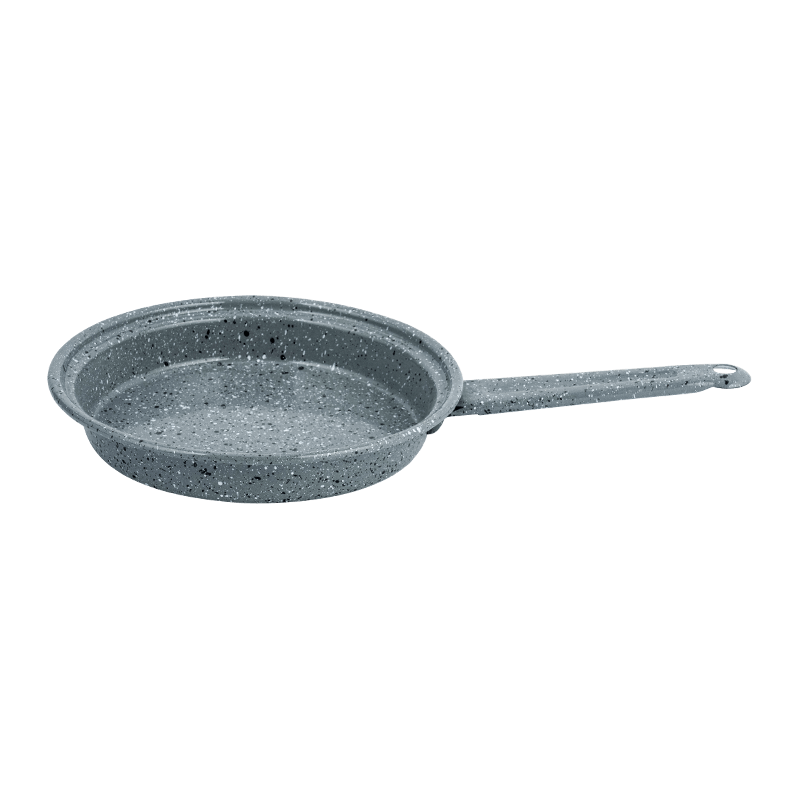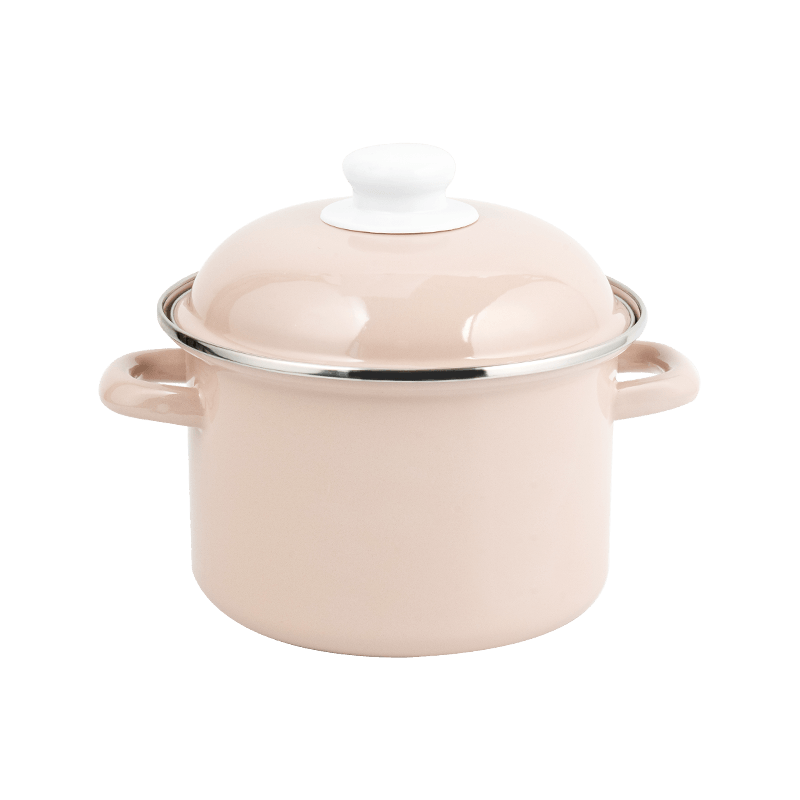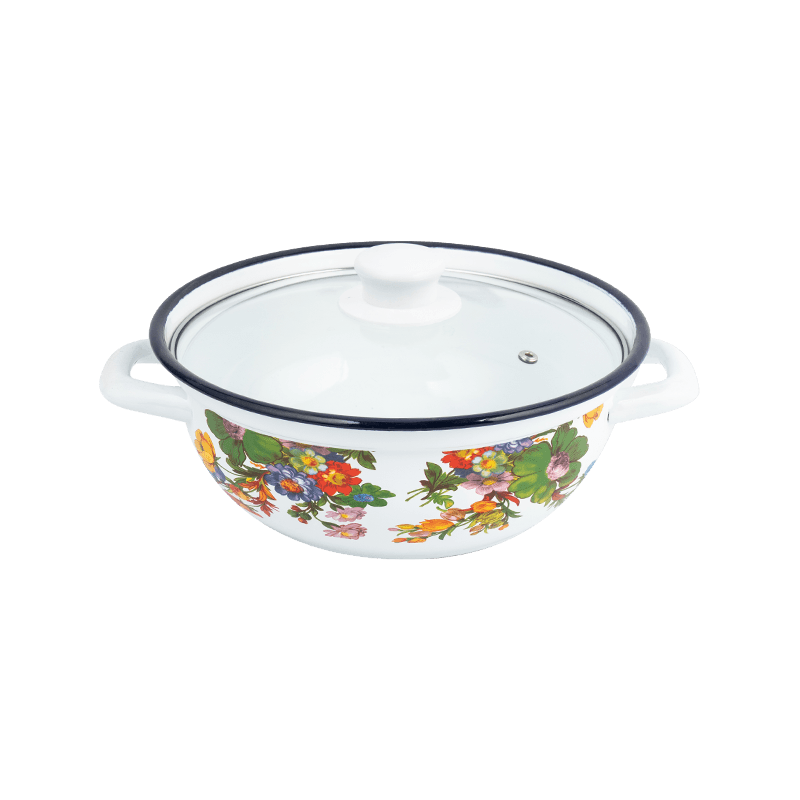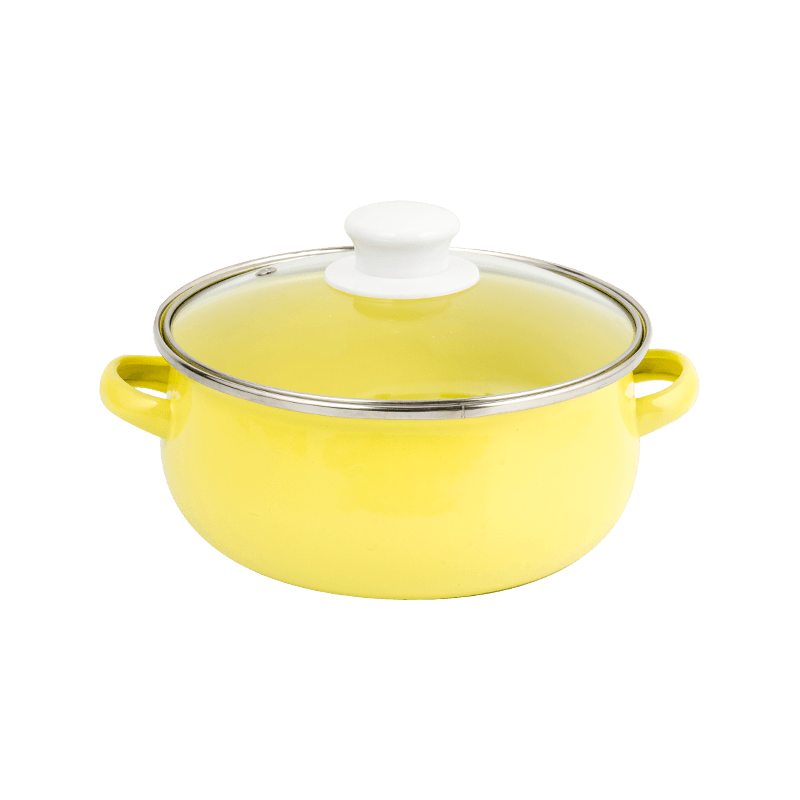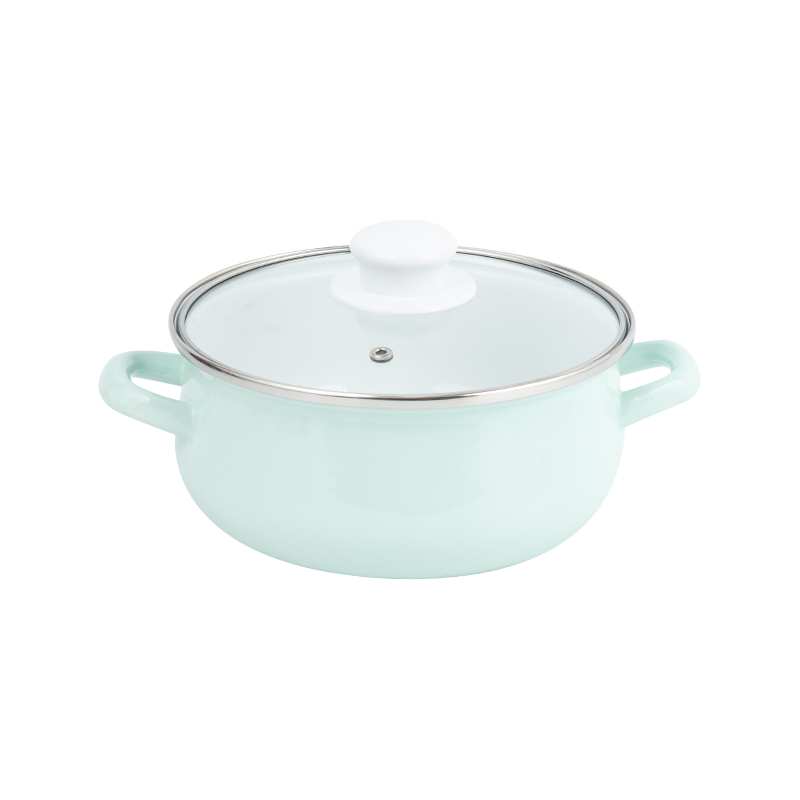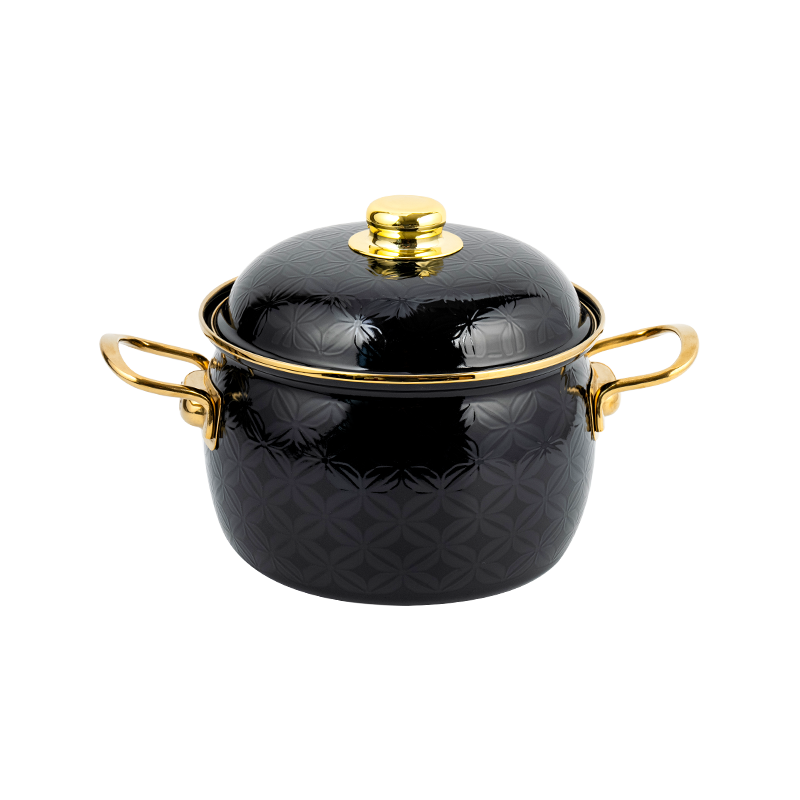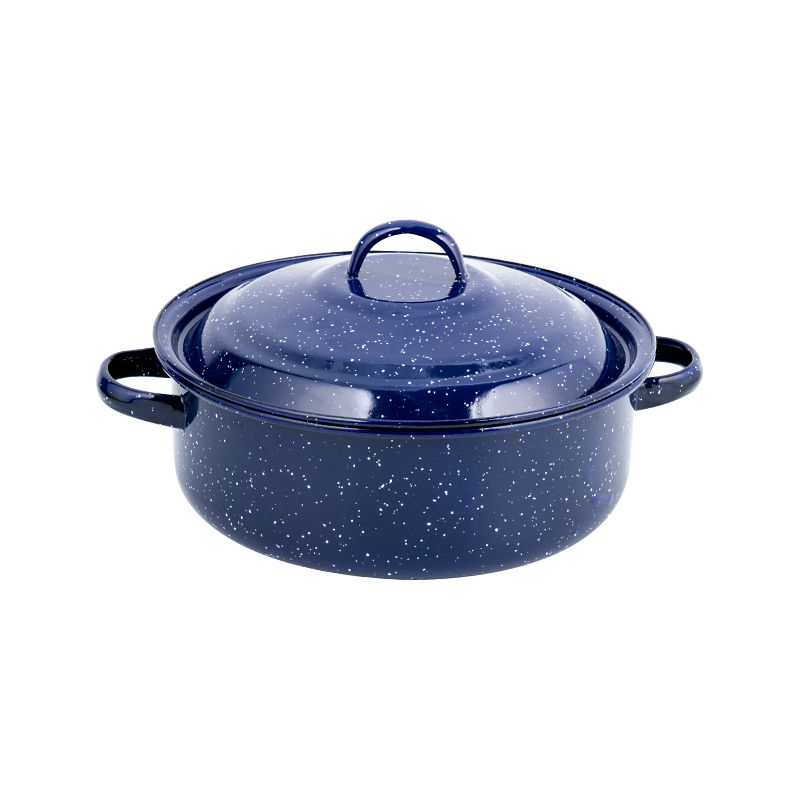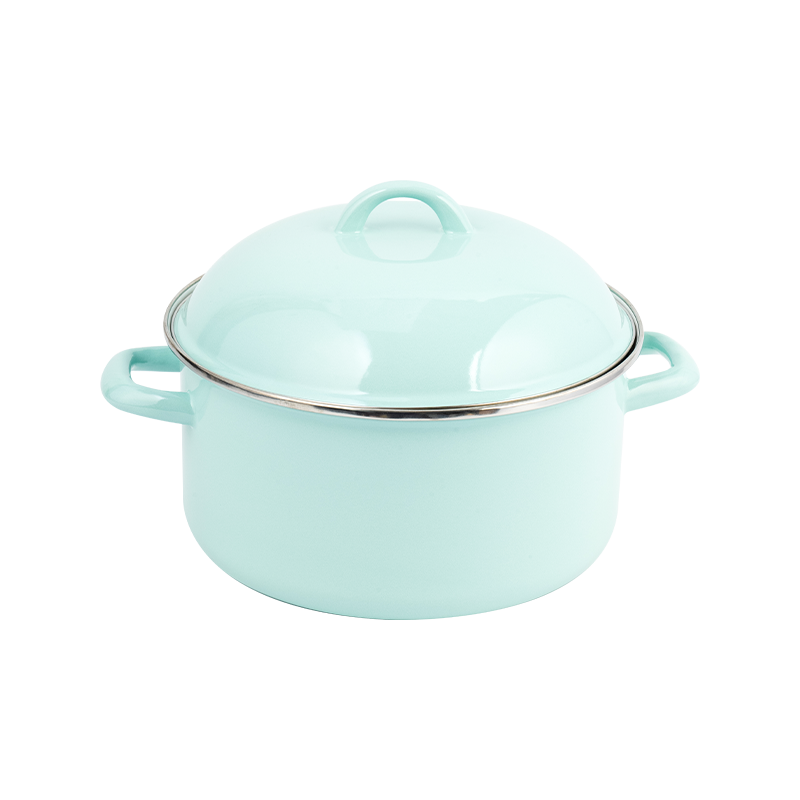A double handle enamel pot is a versatile addition to any kitchen, combining aesthetic appeal with practical functionality. However, not all enamel pots are created equal. To ensure you invest in a durable, safe, and high-performing cookware piece, here are the key features to prioritize during your selection process.
1. Quality of the Base Material
The foundation of any enamel pot is its base metal. Cast iron and carbon steel are the most common materials. Cast iron offers superior heat retention and even heat distribution, ideal for slow-cooking dishes like stews or braises. Carbon steel is lighter but still robust, suitable for everyday use.
Pro Tip: Check the thickness of the metal. A thicker base (ideally 2–3 mm) reduces hot spots and prevents warping over time.
2. Enamel Coating Integrity
The enamel coating is critical for both performance and safety. High-quality pots undergo a high-temperature sintering process (above 800°C/1472°F), which fuses the enamel to the metal, creating a glass-like surface. Look for:
Smooth, bubble-free finish: Avoid pots with visible pits or uneven textures, as these can trap food and lead to chipping.
Non-toxic certification: Ensure the enamel is free from heavy metals (e.g., lead, cadmium) and complies with FDA or EU food safety standards.
3. Ergonomic Handle Design
Double handles provide stability when moving heavy dishes, but their design matters:
Heat-resistant materials: Stainless steel or silicone-wrapped handles prevent burns.
Secure riveting: Handles should be riveted (not glued) to the pot for long-term durability.
Comfortable grip: Test the angle and width—ergonomic handles reduce wrist strain during lifting.
4. Compatibility with Heat Sources
A versatile enamel pot should work across stovetops. Verify compatibility with:
Induction cooktops: Requires a magnetic base (common in cast iron).
Gas/electric ranges: Ensure the flat base maximizes contact for efficient heating.
Oven-safe ratings: High-quality pots tolerate oven temperatures up to 260°C (500°F).
5. Ease of Maintenance
Enamel is naturally nonstick and stain-resistant, but maintenance impacts longevity:
Resistance to staining: Darker interiors hide discoloration better than light-colored coatings.
Dishwasher safety: While handwashing is recommended, dishwasher-safe enamel retains its luster longer.
Chip resistance: Reinforced rims and edges minimize chipping from utensils.
6. Size and Shape
Choose a pot that aligns with your cooking needs:
Capacity: A 4–6 quart size suits most households for soups, pasta, or batch cooking.
Shape: Wide, shallow pots excel at sautéing, while taller designs are better for boiling.
Inferior materials or poor craftsmanship lead to chipping, uneven heating, or safety hazards—issues that diminish both cooking results and user satisfaction.

 English
English 中文简体
中文简体




